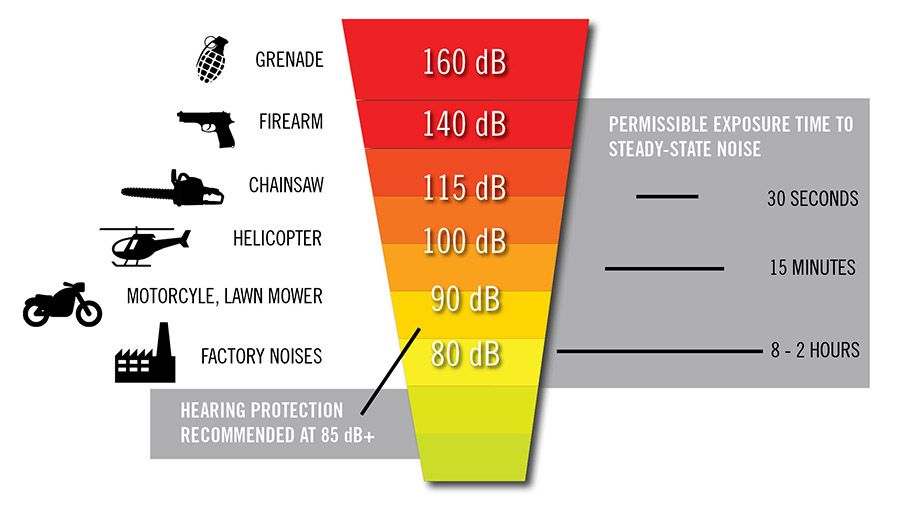Sponsored by Silynx Communications
By Doug Wyllie for Police1 BrandFocus
We can all agree that when outfitting an officer for patrol, safety is the top priority. Not a single police leader would dispute that. Departments place a great deal of emphasis on selecting two-way radios, body armor, patrol rifles and sidearms that will help officers safely do the job and go home at the end of every shift. Agencies also stress the importance of physical fitness and readiness to do the demanding work of law enforcement.
However, sometimes police leaders forget about the need for protection above the neck, with helmets, eye protection and hearing protection getting short shrift in the equipment acquisition process. In fact, many agencies have an approach toward protecting the eyes, ears and skull that is essentially a cobbled-together mishmash of relatively inexpensive solutions that don’t necessarily work well together.
Police leaders should step back and look at protection above the neck with a more holistic approach, with eyes, ears and skull considered in unison. They need to consider the entire head. Eyewear and headsets in particular are frequently ignored, or seen as an afterthought to the helmet.
Protecting the Skull
High-cut helmets, while lighter, reduce the protected area in order to accommodate a communications headset that’s no longer the only option available.
“The genesis for the high-cut helmet was to accommodate these bulky earmuffs for communication,” said Matthew Hemenez, a senior vice president with Silynx Communications. “They were getting in the way – the two weren’t really compatible. So the helmet company just started saying, ‘Well, what if we just cut away a good portion of the ballistics material over the sides of the head and that way you’ve got the communications cups on the side and they’re not interfering.’”
But this reduced the protection for an officer’s head by about 25 percent, which doesn’t make sense, he said. Instead, Hemenez suggested that officers could go back to full-coverage helmets with the use of in-ear communications systems and would not only be better protected but have better quality communications capabilities, better hearing protection and a lot more comfortable system for long-term operations.
“You really want to consider the headset that’s being worn with that helmet so that you can maximize the protection of the head while also being able to accommodate this critical communications application,” he said.
Protect the Ears
Hearing loss is cumulative and non-reversible, and over the course of a full police career of between two and three decades, officers may be exposed to gunfire and other loud sounds on multiple occasions.
Hearing protection should be a priority rather than an afterthought, Hemenez said. Officers can’t protect their hearing simply with foam plugs, because their hearing protection must also allow them to communicate with their two-way radios. They also need their hearing for situational awareness.
Systems that combine electronic hearing protection with communications accomplish both aims, he said. There are two versions: over-the-ear and in-the-ear. Over-the-ear headsets are the big earmuffs based on a 1910 patent – a design that’s more than a hundred years old.
An in-ear option may be best. Over-the-ear hearing protection can be very hot, and most options add nearly a full pound to the weight of the helmet. In-ear protection and communication options weigh about 2-3 ounces and don’t interfere with the helmet, allowing officers to use a full-shroud helmet for full head protection.
Protect the Eyes
Hemenez said also that more attention can be paid to ballistic eyewear and that it’s not just a “nice to have” item.
“Any little thing can get into somebody’s eye and take them out of service immediately,” he said. “One reason eyewear is discouraged is because it interferes with the over-the-ear muffs – another reason to consider an in-the-ear system.”
For patrol officers, eye protection can be sunglasses that meet the ANSI Z87.1 standard for vision protection in the workplace. For SWAT operators, eye protection often takes the form of full mask goggles that meet the same standard and integrate well with the helmet and the hearing protection. Options for bright or low-light situations are available as well.
Conclusion
Two commonly forgotten elements of protection above the neck are sight and hearing – two of the most essential senses an officer has. Critical decisions are based on what officers see and hear, so those senses must be given more emphasis during the acquisition process for protective gear.
In order to properly address the officer safety issue with regard to protecting the head, police leaders should take a holistic approach, integrating the eyes, the ears and the helmet as a single system where all parts work together. None of the pieces should interfere with another or create problems between the different components.
About the Author
Doug Wyllie is Editor at Large for Police1, providing police training content on a wide range of topics and trends affecting the law enforcement community. Doug is the 2014 Western Publishing Association “Maggie Award” winner for Best Regularly Featured Digital Edition Column and has authored more than 1,000 articles and tactical tips. Doug hosts the Police1 Podcast, Policing Matters, and is the host for Police1 Video interviews. Doug is a member of International Law Enforcement Educators and Trainers Association (ILEETA), an Associate Member of the California Peace Officers’ Association (CPOA), and a member of the Public Safety Writers Association (PSWA).













